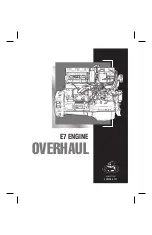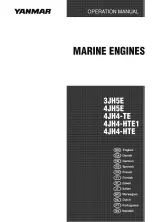
Anleitung / Manual Hacker A30 / A40 Glider
© 2013 Hacker Motor GmbH
Seite 4
-
Please refer to the datasheet for the maximum usable rpm of the motor. For safety’s sake, care
must be taken not to exceed this limit. When using a gearbox, take into consideration that the
motor rpm may be calculated by multiplying the propeller rpm by the gearbox ratio.
-
Since it is possible for an electric motor to start following connection to a battery (for example
from improper operation, an electrical defect, or interference), extreme caution must be
exercised upon making this connection!
-
Electric motors have the potential to cause injury. This risk increases when the motor is rotating
a propeller that may also strike and propel other objects.
-
Hacker Brushless Motors may only be used when the potential for personal and property
damage has been eliminated.
-
A damaged motor (for example electrical, mechanical or moisture damage) may not under any
circumstances continue to be used. Doing so may result in sudden motor damage in the future.
-
Hacker Brushless Motors may only be used in an environment free from the risk of static
electrical discharges.
-
Hacker Brushless Motors may only be supplied with electricity from batteries connected to an
appropriate brushless controller (see above). The connection to a power supply is not permitted.
-
Under no circumstances a Hacker Brushless Motor should be connected to an electrical network
based on alternating current (e.g. 100-230V).
-
The use of these motors in man-carrying vehicles, whether airborne or otherwise, is not
permitted.
2.
Allgemeine Hinweise /
General notes
Alle Hacker-Brushless-Motoren sind bürstenlose Motoren. d.h., sie benötigen eine Kommutierung im
Drehzahlsteller. Dafür sind die Drehzahlsteller der MASTER-Serie und der X-Serie vorgesehen.
Ein Betrieb dieser Motoren mit herkömmlichen Drehzahlstellern für Bürstenmotoren oder mittels
direktem Anschluß an eine Stromquelle ist deshalb nicht möglich. Eine solche Vorgehensweise wird
den Hacker-Brushless-Motor zerstören.
Ein Elektromotor wird durch zu hohe Wärmeentwicklung zerstört. Die Motoren sind bis zu einer
Gehäusetemperatur von 65°C temperaturfest. Auch wenn sich der Motor außen kalt anfühlt, kann
die Wicklung deutlich heißer sein! Deshalb müssen zu hohe Temperaturen im Gehäuseinneren
vermieden werden.
Eine zu hohe Wärmeentwicklung tritt dann auf, wenn der Motor überlastet wird. Dies kann z.B.
durch die Verwendung eines zu großen Motorritzels, durch ein Blockieren der Motorwelle oder durch
zu lang andauernde Einschaltdauer geschehen. Deshalb ist im Zweifelsfall immer zuerst ein kleines
Motorritzel zu erproben und dabei die Motortemperatur zu prüfen.
Es ist immer für eine wirkungsvolle Kühlung zu sorgen.
Den Motor keinesfalls im Leerlauf ohne Last betreiben! Der Motor kann auch durch nur kurzzeitige
sehr hohe Drehzahlen zerstört werden.
Modellbau Lindinger GmbH
Modellbau Lindinger GmbH e-Mail: [email protected] www.lindinger.at




























